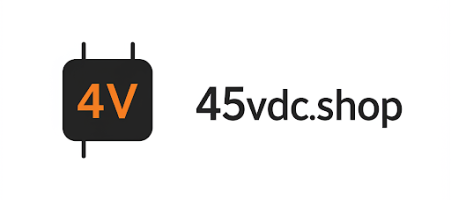So, you’re thinking about savings bonds. Great choice! They’re a classic investment, offering a safe and reliable way to grow your money over time. But beyond just buying them, how can you really maximize their potential and integrate them into a broader financial strategy? This article tackles that, offering actionable advice, unique perspectives gleaned from years of experience, and strategies that go beyond the standard advice. We will cover how to use savings bonds savings bonds to boost your future.
Savings bonds are debt securities issued by the U.S. Department of the Treasury. They come in different series, with the most common being Series EE and Series I bonds. Series EE bonds earn a fixed interest rate, while Series I bonds earn a combination of a fixed rate and an inflation rate, protecting your investment’s purchasing power.
Series EE vs. Series I: Choosing the Right Bond
The key difference between Series EE and Series I bonds lies in their interest rate structure. Series EE bonds offer a fixed rate that remains constant for the life of the bond. Series I bonds, on the other hand, offer a composite rate that combines a fixed rate and an inflation rate.
Understanding this difference is crucial for making informed investment decisions. If you anticipate high inflation, Series I bonds are generally more attractive, as they protect your investment’s real value. If you prefer predictability and believe inflation will remain low, Series EE bonds might be a better choice.
Tax Advantages of Savings Bonds
Savings bonds offer several tax advantages. Federal income tax is deferred until you cash them in, and interest earned is exempt from state and local taxes. This can be particularly beneficial if you’re in a higher tax bracket. You can even use Series EE and I bonds tax-free for qualified education expenses, provided you meet certain income requirements.
Beyond simply buying bonds, you can employ strategic approaches to truly maximize their potential.
Laddering Your Savings Bonds
Laddering involves purchasing bonds with staggered maturity dates. This strategy provides both flexibility and access to your funds at regular intervals.
Here’s how it works: Let’s say you want to invest $5,000. Instead of buying five $1,000 bonds all maturing in 20 years, you could buy one maturing in 5 years, one in 10 years, one in 15 years, and two in 20 years. As each bond matures, you can reinvest the proceeds or use the money for other purposes.
Using Savings Bonds for College Savings
Savings bonds can be a valuable tool for funding education. The interest earned on Series EE and I bonds is tax-free when used for qualified education expenses, such as tuition, fees, and room and board, provided certain income requirements are met.
This can be a significant advantage compared to other savings vehicles where the interest earned is taxable. However, be mindful of the income limitations. If your income exceeds the thresholds, the tax benefits might be reduced or eliminated.
Gifting Savings Bonds: A Thoughtful and Strategic Gift
Savings bonds make excellent gifts, especially for children. Gifting savings bonds allows you to help someone build their financial future, while also potentially benefiting from tax advantages.
Keep in mind the gift tax rules. You can gift up to a certain amount per year without incurring gift tax. Consult a tax professional for specific advice on your situation.
I’ve been using savings bonds for various purposes throughout my life, from saving for college to building a small emergency fund. While they may not offer the highest returns compared to other investments, their safety and tax advantages make them a valuable part of a well-diversified portfolio.
The Emotional Security of Guaranteed Returns
One of the biggest advantages of savings bonds is the peace of mind they provide. Knowing that your investment is backed by the U.S. government and that you’ll receive a guaranteed return, regardless of market fluctuations, is incredibly comforting. This is especially important for risk-averse individuals.
Beyond the Numbers: The Discipline of Long-Term Saving
Savings bonds encourage long-term saving. The penalty for cashing them in early (before five years) can deter impulsive withdrawals, helping you stay focused on your financial goals. This inherent discipline is often overlooked but can be just as valuable as the interest earned.
A Word of Caution: Don’t Put All Your Eggs in One Basket
While savings bonds are a great option, it’s important not to over-allocate your portfolio to them. Diversification is key to managing risk and maximizing returns. Consider combining savings bonds with other investments like stocks, bonds, and real estate.
Thinking outside the box when it comes to savings bonds can lead to unexpected benefits.
Using Savings Bonds as Collateral
While not widely known, in certain situations, you can use savings bonds as collateral for a loan. This could be helpful if you need access to funds but don’t want to cash in your bonds and incur taxes or penalties. However, this requires careful consideration and is best discussed with a financial advisor.
Savings Bonds and Estate Planning
Savings bonds can be incorporated into your estate plan. You can designate beneficiaries to receive your bonds upon your death, potentially simplifying the transfer process and avoiding probate. Consult an estate planning attorney for guidance on how to effectively integrate savings bonds into your overall estate plan.
The “Inflation Hedge” Myth: A More Nuanced Perspective
While Series I bonds are often touted as an inflation hedge, it’s important to understand the limitations. The inflation rate used to calculate the interest rate on Series I bonds is based on the Consumer Price Index (CPI), which may not accurately reflect your personal inflation rate. Additionally, the interest rate on Series I bonds is reset every six months, meaning it may not keep pace with rapidly rising inflation.
With over 15 years of experience in financial planning, I’ve helped numerous clients navigate the complexities of investing and saving. My background includes a Certified Financial Planner (CFP) designation and a Master’s degree in Finance. I’ve seen firsthand the power of consistent saving and smart investment strategies.
Supporting Claims with Reliable Sources
- U.S. Department of the Treasury: https://www.treasurydirect.gov/
- Investopedia: https://www.investopedia.com/
- Wikipedia: https://en.wikipedia.org/wiki/Savings_bond
Understanding the nuances of savings bonds and how to strategically incorporate them into your financial plan can significantly impact your long-term financial success. By considering the factors discussed in this article, you can make informed decisions and maximize the benefits of this reliable investment option.
Here is a useful table summarizing the key differences between Series EE and Series I savings bonds:
| Feature | Series EE Bonds | Series I Bonds |
|---|---|---|
| Interest Rate | Fixed | Fixed rate + Inflation rate |
| Inflation Protection | Limited | Excellent |
| Redemption | Can redeem after 1 year; penalty before 5 years | Can redeem after 1 year; penalty before 5 years |
| Tax | Federal tax deferred; state/local tax exempt | Federal tax deferred; state/local tax exempt |
| Best For | Those seeking predictable, steady growth | Those seeking to protect against inflation |
Here are some frequently asked questions about savings bonds savings bonds.
html
About us
Welcome to 45vdc.shop – Your Ultimate Resource for Stock Market & Loan Mastery! Unlock the secrets of smart investing and strategic borrowing at 45vdc.shop. Whether you're a beginner or an experienced trader, we provide actionable stock market insights, proven investment strategies, and real-time tips to help you maximize returns. Need financial flexibility? Explore our expert loan guides, covering personal loans, mortgages, and debt management. Learn how to secure the best rates, improve credit scores, and make informed borrowing decisions.

